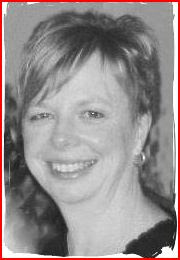 Extracts from 'The Tom Thomson Mystery'.
Extracts from 'The Tom Thomson Mystery'.From the chapter: Incident on Saturday night
1. "Tom was naturally quiet and self effacing, in sharp contrast to the brash, outspoken, and often boastful son of Mr. Bletcher, Senior, a long time cottager on the lake. On leaving the cabin before midnight, Bletcher who had made himself unpopular because of his outbursts and actions towards the guide (Tom) hurled some additional insults and a final threat of: "Don't get in my way if you know what's good for you!" pg. 40
From the Chapter: A fateful Summer's Day
2. Dr. Robinson introduced a point..............He states that Tom's canoe was "discovered" in Bletcher's boathouse, by Charlie Scrim, a local guide. pg. 47pg
From the Chapter: The Search
3. The spare or portaging paddle had been found lashed in a position to portage but had been knotted in a most unorthodox way, as if a much less experienced canoest than Tom Thomson had tied it. pg. 50
From the Chapter: Dr. Howlands's Discovery
4. At the time of Dr.Howland's discovery, Mark helped remove the clothing from the body. In the process, he was obliged to remove al length of fishing line that was wrapped around Thomson's leg at the ankle, 16 or 17 times. pg. 57
Mark is later quoted as saying: "Now, it wasn't tangled up in a fishing line. That's not so. This was wrapped on as carefully, right around and around and around and Roy Dixon asked if I had a sharp knife and when I said that I did, "Will you just remove those strings?" And, I did; and I counted them. That's why I know there was 16 or 17. I have it in my dairy or notebook, just how many there were. pg. 58
5. "There was no water in the lungs." pg 58
6 "Across the left temple there was a mark, it look like he was struck by the edge of a paddle." pg 58
After Tom's Death - the Coroner's reportChapter: The Coroner's Inquisition
7. "The coroner for that area , Dr. Ranney, of North Bay, had been delayed in the course of his duties, so that he arrived at Canoe Lake on the 8pm eastbound train via Scotia Junction, on the evening of the day that Tom was buried in the Canoe Lake Hillside. Arriving at the Canoe Lake Station, the doctor was met, interestingly by Martin Bletcher Sr. who drove him to his own cottage by motorboat a mile or two through Potter's Creek across the north end of Canoe Lake.
Dr. Ranney had supper at the Bletcher household.... pg. 72 and pg 81. "There was little doubt that the Bletcher cottage was a restrictive environment to the participants in the inquest. Some might have been more willing to express their opinions had a neutral location been selected for the investigation.
Chapter: Blowden Davies checks the facts
8. "The weather and water conditions on canoe lake that day was calm." pg 94
9. "The portage for which he was heading is adjacent to the shallow soft bottom with no real difficulties to explain an accident occuring at the landing. One would be touching bottom almost before the bow of the canoe would touch shore. If a person were to fall out of his canoe, he would not likely be completely submerged and would be lying in soft decayed vegetation and silt bottom." pg 94
Source:
The Tom Thomson Mystery, Willim Little. c1970, McGraw-Hill, Toronto. ISBN: 0-07-0922655-7.













































